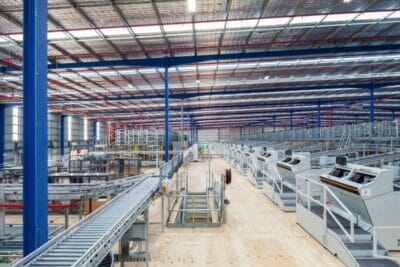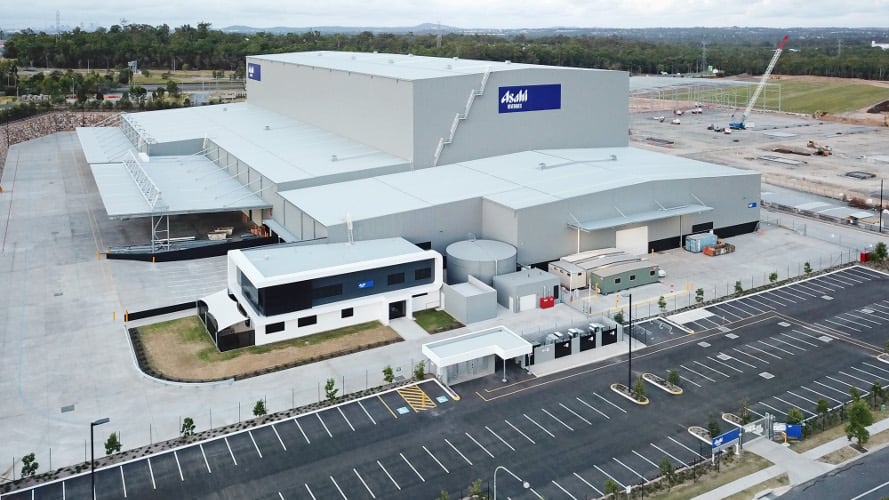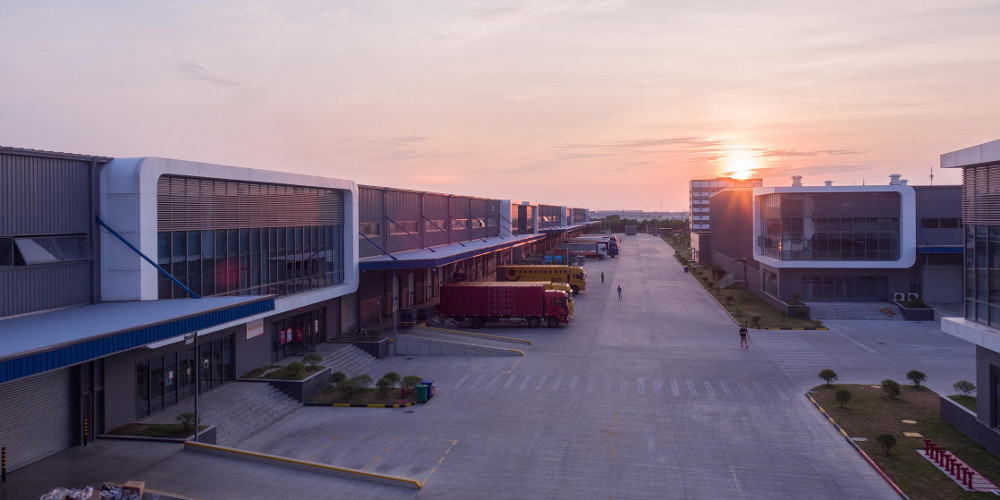
LOGOS developed a new fulfillment center for Toll Group in Australia
Ten minutes. That’s all it took to receive my recent order of chilled craft beer from Ele.me (an Alibaba Group company). There was no need for me to make a trip down to the local pub or to have planned ahead and bought, then refrigerated some beer from the grocery store. It was simply a click and a short wait away. Twenty minutes later a separate order of eggs, milk, and fresh chicken breast arrived. That night’s dinner and drinks, along with the following day’s breakfast, all arrived within a half hour of placing delivery.
Even as a professional in the logistics property sector, I am astonished at the delivery standards now set in China’s largest cities. Living in central Shanghai, ordering from Ele.me, I can purchase specialty items from America, Europe and China, which arrive at my doorstep ready to consume within 20 minutes. China’s gateway cities are definitely setting the standard globally in offering such product depth and efficient delivery.
With consumers’ demand for this level of service set to continue, it’s interesting to look at the meticulous process that makes this work, as both supply chain functions and the underlying property infrastructure that support them, are changing the way we all live.
Getting Fresh Goods to Your Door
Perishables have quietly risen to the top of the “new retail” opportunities list; the omnichannel concept of shopping “anywhere” at “anytime” with the customer choosing the access point, and the retailer providing conduits for how to receive a product, without any bias towards either bricks and mortar or e-commerce.
Apparel, electronics, and household appliances are features of our lives, but we don’t purchase them nearly as often as food and beverages. Prepared meals, ordered online from familiar restaurants, have helped to establish the current perishable delivery networks. But our expectation has moved on, with fresh food ingredients to be prepared at home and hot or cold beverages, such as my cold beer, now extending our notion of what we think is “deliverable.”
As food and health safety rises in importance to families in Asia, with freshness directly linked to well-being, these items are obviously only useful to the customer if freshness is preserved in the “cold chain” until the moment of consumption.
So how does that produce or cold beer get to us fresh, cold and ready to consume? The cold chain’s origination point begins far away from the place you, or I, enjoy a perishable. This “fresh channel” consists of both hard infrastructure and transportation networks.
Before a fresh product arrives at your home, it spends time at a bottler, fresh food processing facility, or perhaps even at an airport cargo terminal, when spoilage sensitive items like seafood or beef arrive carefully packed and chilled. From there, a retailer will accept these fresh products as part of the supply chain under its management and will direct these goods to a distribution facility for organization and storage, until it’s time for sale.
LOGOS, a leading owner, developer and manager of logistics real estate across Asia Pacific, plays a large role in this stage of the process. Modern distribution centers, which can accommodate large scale storage of perishables, and importantly efficiently manage the turnover of these goods, are essential in allowing companies to reach their customers in the timeframes now expected by the market. These facilities need to incorporate high cubic capacity design including up to thirty-meter clear heights and superior floor loading capabilities, which enable high bay racking systems, chillers and freezers, and increasingly, automated technology to improve speed and efficiency.
LOGOS Builds High-Tech Sheds for Cold Chain

The logistics property specialist built a state-of-the-art facility for Asahi Beverages in Brisbane, Australia
LOGOS is partnering with a number of customers in the cold storage sector as its customers look to service this growing demand for quick access to perishables and other goods across Asia Pacific.
In Brisbane, Australia, LOGOS developed a c. 20,000 square metre purpose built, high-bay facility for Asahi Beverages, part of Asahi Group Holdings, one of the world’s leading food and beverage companies and one of Australia’s largest brewers. The facility incorporates state of the art warehousing technology, with satellite multi deep racks with an Automated Storage & Retrieval System (ASRS) and Storage and Retrieval Machines (SRM) operating within racking aisles to carry out, put-away and retrieve pallets from the racking and loading bays.
This facility is used to efficiently deliver thousands of beverages to its retail clients, which ultimately improves its service to the end customer. LOGOS is also developing a c. 45,000 square metre purpose-built meat processing and distribution facility on the estate for Hilton Foods Australia Pty Limited, part of the Hilton Food Group plc, the international specialist retail meat packing company. This facility will employ automation and robotic technology to improve the production and delivery times to retailers, which in turn delivers a fresher product to the end customer.
Both of these facilities function as key distribution nodes in the Australian states of Queensland and New South Wales, improving the connection between the manufacturer and the retail consumer. They offer advanced food and beverage processing and preservation so the perishable goods ultimately reach the end customer more quickly. In Hangzhou, China, LOGOS is developing a 37,000 square metre facility similar in nature to the one completed in Australia, which will specialize in the storage and processing imported food (fresh meat) and beverages.
Last summer, LOGOS completed a 12,000 square metre cold storage retrofit of a newly built ambient warehouse space for Metro, which distributes key perishables such as imported wine and chocolate into the Greater Yangtze River Delta, from its Taicang, Jiangsu Province location.
“New Retail” Drives Logistics Innovation

Completed by LOGOS last summer, a 12,000 sq m cold storage retrofit of a warehouse for Metro in Taicang, China
With the same objective of efficient access in mind, LOGOS also developed a new fulfillment center for Toll Group, Asia-Pacific’s leading logistics service provider, offering road, air, sea and rail solutions. The new fulfillment centre was developed in close collaboration with Speciality Fashion Group, Australia’s largest women’s fashion retailer. The increased e-commerce efficiencies meant the retailing group is able to reduce its physical stores to 700 from 1,000.
Now that the “new retail” model allows products to come to the customer much faster than it takes for the consumer to go to the product, retailers, transportation companies and logistics property developers are building a supply chain infrastructure that will expand the range of products delivered, and the time it takes for them to reach us. While eggs and beer may seem extraordinary today, prescription medications and 3-D printed customized items are soon to follow.
Currently, LOGOS is exploring different ways to support the roll-out of healthy perishable food networks all over the Asia Pacific region for its customers. Investing into and developing property infrastructure is key and LOGOS is also collaborating with its retail and transportation partners to examine ways to improve freshness once the product is on the road and out for delivery.
As the world moves to demanding quicker access to products, including fresh food and beverages, LOGOS aims to play a significant role in the advancement of the cold chain industry across the Asia Pacific region and help provide access to fresh and healthy food.
This sponsored feature was contributed by logistics specialist, LOGOS. To learn more, visit www.logosproperty.com
Leave a Reply